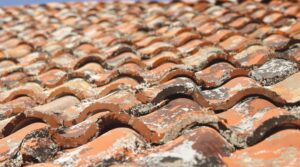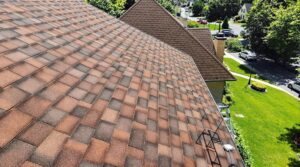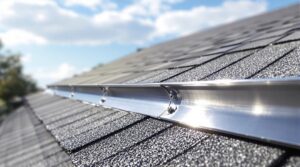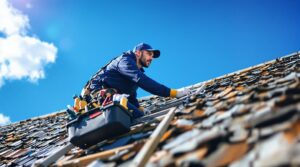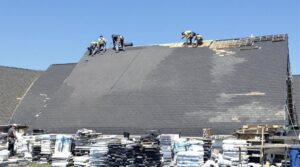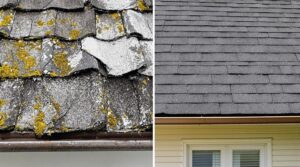Ready to tackle insurance for your roof replacement? Let’s turn this potentially stressful process into a winning strategy you can master. Think of it as playing chess with your insurance company – every move counts!
First up, build your fortress of evidence. Grab your phone and document every shingle, crack, and weather-related wound your roof has suffered. Remember, the camera doesn’t lie, and those crystal-clear photos and videos will be your best friends during negotiations.
Want to really strengthen your case? Get multiple roofing pros to assess the damage. They’ll provide detailed estimates that break down every cost – from materials to labor – giving you solid ammunition for your insurance discussions. It’s like having expert witnesses in your corner!
When the insurance adjuster visits, don’t just stand back. Walk them through your roof’s story, pointing out damage patterns and explaining how that massive storm or fallen tree caused the havoc. Keep communication channels wide open and organize your paperwork like a pro – trust me, it makes a world of difference.
Feeling overwhelmed? Consider bringing in a public adjuster. These specialized negotiators know the insurance game inside out and can often boost your settlement significantly. They’re like having a skilled translator who speaks fluent “insurance-ese”!
By understanding these key moves and playing your cards right, you’ll maximize your chances of securing the roof replacement coverage you deserve. Remember, it’s not just about getting a new roof – it’s about getting fair value for your policy payments. Additionally, be sure to document any damage thoroughly and keep copies of all communication with your insurance provider. This diligence will serve you well, especially when navigating the complexities of homeowners insurance roof replacement claims. Ultimately, being proactive and informed will empower you to advocate for your rights as a policyholder, ensuring that you receive the compensation you need for your investment in your home.
Key Takeaways
Want to Get the Most from Your Roof Insurance Claim? Let’s Talk Strategy!
Think of your roof claim like a chess game – every move counts! Here’s your winning playbook:
Become a Documentation Detective 📸
Snap crystal-clear photos and videos of every shingle, crack, and dent before anyone touches your roof. It’s like building your case file – the more evidence you have, the stronger your position. Pro tip: Get a certified roofing inspector to document damage; their professional eye catches what we might miss.
Know Your Policy Inside Out 📄
Ever tried playing a game without knowing the rules? That’s what negotiating without understanding your policy feels like. Dive deep into those coverage details – especially the difference between Replacement Cost Value (RCV) and Actual Cash Value (ACV). Your strategy changes completely based on which one you have!
Arm Yourself with Multiple Estimates 💪
Think of contractor estimates as your negotiation ammunition. Get at least three detailed quotes with every single cost broken down. When you show the adjuster multiple professionals agreeing on price points, you’re speaking their language.
Team Up for Inspection Day 🤝
Create your dream team by having your trusted roofer present when the insurance adjuster visits. It’s like having your own expert witness who can spot and explain damage in real-time. This tag-team approach often prevents overlooked issues.
Consider Your Secret Weapon: The Public Adjuster 🎯
For those tricky claims where thousands are at stake, a public adjuster can be your MVP. They’re like having a professional negotiator in your corner, often increasing settlements by 30% or more. Yes, they charge a fee, but their expertise can pay for itself many times over.
Understanding Your Insurance Policy Coverage
Insurance policies represent complex contracts that govern the scope and limitations of roof replacement coverage. Homeowners must thoroughly examine their policy documentation to understand coverage nuances, including specific covered perils and exclusions. These details are crucial as they can significantly impact the financial assistance homeowners receive following a loss. It’s advisable to contact your insurance agent for clarification on any confusing terms or conditions, particularly regarding the damaged roof insurance coverage details. By fully understanding these aspects, homeowners can ensure they are adequately protected and can make informed decisions when a roofing issue arises.
Standard policies typically protect against 16 named perils, such as windstorms, hail, and falling objects, while excluding wear and tear and maintenance-related issues.
Policy limitations vary greatly between providers, particularly regarding Actual Cash Value (ACV) versus Replacement Cost Value (RCV) coverage. Understanding deductibles, coverage limits, and depreciation factors is vital for accurate claim assessment.
The age of the roof often influences coverage extent, with older roofs potentially subject to reduced coverage or complete exclusion. Regular policy review guarantees homeowners maintain awareness of their coverage parameters and can adjust protection levels as needed.
Public adjusters can assist homeowners in navigating complex claims and ensuring fair settlements.
Documenting the Roof Damage
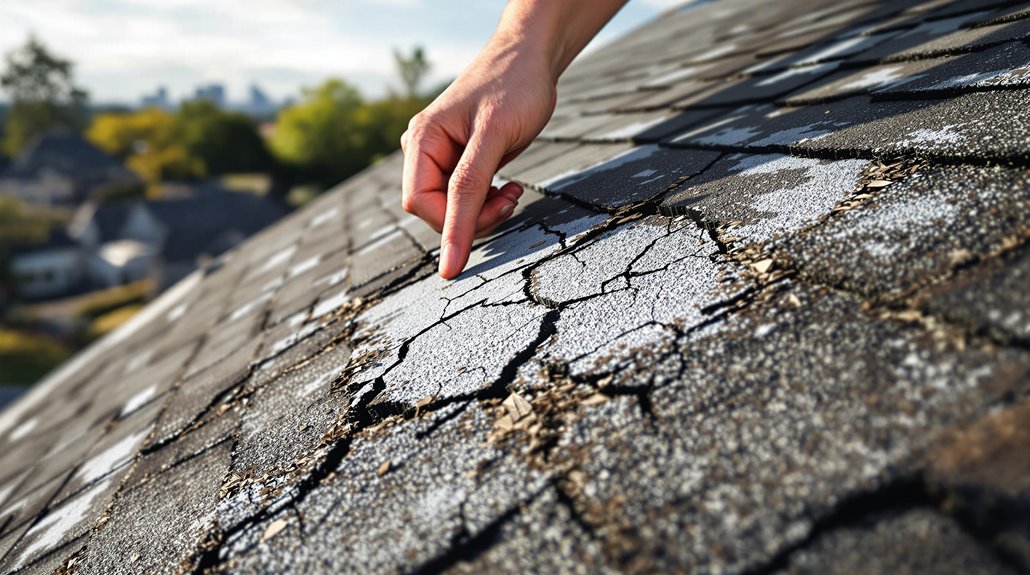
A thorough photographic and video record serves as essential documentation when negotiating a roof replacement claim with insurance companies.
The documentation should capture detailed images of all damaged areas from multiple angles, including close-up shots of affected shingles, flashing, vents, and any visible structural issues.
During the insurance adjuster’s inspection, homeowners should systematically guide them through each documented damage point while providing corresponding visual evidence.
Maintaining detailed claim receipts throughout the documentation process helps establish a clear audit trail for insurance providers to review.
Take Photos and Videos
Thorough photo and video documentation serves as essential evidence when negotiating a roof replacement with insurance companies. Using high-quality equipment, property owners should capture extensive images from multiple damage angles, including both close-up details and wider contextual shots.
The documentation process requires systematic coverage of all affected areas, particularly edges, ridges, and spots with visible debris. Timestamps should be included with each photo and video to establish a clear timeline of events.
For maximum effectiveness, the evidence should showcase both exterior and interior damage, supplemented by pre-damage photos when available. This detailed visual record supports damage reports, validates insurance claims, and helps prevent claim denials by demonstrating proper maintenance and the full extent of necessary repairs. Including a ruler or measuring tape in photos provides critical scale reference for insurance adjusters reviewing the claim evidence.
Document Adjuster Inspection Areas
Properly documenting adjuster inspection areas requires systematic organization of evidence before, during, and after the assessment process. Homeowners should maintain a detailed inspection checklist that outlines each area the adjuster examines, noting specific damage points and their locations. This documentation serves as a critical reference for future adjuster communication and claim negotiations.
During the inspection, homeowners should accompany the adjuster, recording their observations and confirming all damaged areas receive proper attention.
Professional roofers’ written assessments should be readily available to support damage claims. The documentation package should include weather reports, maintenance records, and photographs that chronicle the roof’s condition before and after the damaging event.
This organized approach strengthens the homeowner’s position during insurance negotiations and helps guarantee a thorough evaluation of all damage. Working with public adjusters can increase claim settlements by up to 574% compared to self-filing claims.
Getting Professional Contractor Estimates

Obtaining multiple contractor estimates provides critical leverage during roof replacement negotiations and enables direct cost comparisons across providers.
Professional estimates should include detailed line-item breakdowns that specify material grades, quantities, labor hours, permit fees, and other essential costs.
Comparing material specifications across different contractor bids helps homeowners identify discrepancies in quality and guarantees equivalent products are being quoted for accurate price evaluation.
Working with a public adjuster can increase insurance settlement amounts by 30-50% when negotiating roof replacement costs. Additionally, a public adjuster has the expertise to thoroughly assess damages and document necessary repairs, ensuring that all relevant factors are taken into account during negotiations. This professional advocacy not only maximizes settlements but also provides peace of mind for homeowners navigating the complexities of insurance claims. As a result, many find that this investment pays off, especially when considering future home insurance costs after roof replacement.
Multiple Bids Matter Most
Getting multiple bids for roof replacement requires careful consideration of several key factors that extend beyond simple price comparison. When evaluating bids, it’s essential to assess the reputation and experience of the contractors, as well as the warranties they offer. Additionally, understanding the various roof installation material types available can significantly impact both the longevity and aesthetic appeal of your new roof. Taking the time to research and ask questions will ensure you make an informed decision that meets your specific needs.
While insurance companies often request multiple bids, industry standards and software like Xactimate ultimately determine replacement costs.
Multiple bids can serve as effective negotiation strategies when dealing with insurance companies, particularly in demonstrating due diligence and strengthening the homeowner’s position.
However, homeowners should be aware that insurers sometimes use multiple bids to reduce costs rather than guarantee quality work.
For properties with Replacement Cost Value (RCV) policies, multiple bids become less essential since these policies cover full replacement costs.
The primary focus should remain on selecting a reputable contractor who will advocate for the homeowner’s interests and deliver quality workmanship, rather than choosing the lowest bid.
Working with licensed roofing public adjusters can help maximize potential settlement outcomes when insurance companies provide insufficient initial offers.
Detailed Line-Item Breakdowns
Detailed line-item breakdowns serve as the foundation for successful roof replacement negotiations. Professional contractors should provide detailed estimates that itemize materials, labor costs, and specific repairs needed. This transparency enables homeowners to effectively plan budgets and negotiate with insurance providers.
| Component | Description | Typical Cost % |
|---|---|---|
| Materials | Shingles, underlayment, flashing | 40% |
| Labor | Installation, removal, cleanup | 60% |
| Permits | Local building requirements | 5% |
| Warranties | Material and workmanship guarantees | 3% |
While not all contractors provide itemized breakdowns by default, homeowners should request this documentation. A thorough estimate includes inspection findings, measurement details, and debris removal plans. These detailed estimates prove invaluable when negotiating with insurance companies, particularly in documenting the necessity of specific repairs and justifying associated costs. Working with public adjusters can increase insurance settlements by up to 350% through more comprehensive documentation of damages.
Compare Material Specifications
Professional material specifications form the cornerstone of accurate roof replacement estimates, requiring contractors to adhere to stringent ASTM standards across all components.
When comparing estimates, homeowners should verify that material standards align with insurance requirements, particularly for asphalt shingles conforming to ASTM D3018 Type I and flashing materials meeting ASTM A 653/A 653M specifications.
Specification comparisons should focus on detailed documentation of materials, including felt, sheathing, and fasteners.
These components must meet specific thickness requirements and industry standards. Contractors should provide thorough breakdowns that clearly outline material quality, type, and associated costs.
This level of detail facilitates smoother insurance negotiations while ensuring compliance with local building codes.
Proper material specification alignment can greatly reduce claim disputes and expedite the approval process.
Working with public adjusters can increase settlement amounts by up to 800% when material specifications are properly documented and presented.
Working With Insurance Adjusters

When dealing with roof replacement claims, effective collaboration with insurance adjusters plays an essential role in securing appropriate coverage and compensation.
Effective communication and adjusting expectations throughout the claims process guarantees a smoother evaluation and settlement outcome.
Key steps for working with insurance adjusters include:
- Document all damage thoroughly with photographs and detailed notes before the adjuster’s arrival.
- Review policy coverage and exclusions to understand claim parameters.
- Schedule joint inspections with both the adjuster and a qualified roofing contractor.
- Maintain organized records of all correspondence and negotiations.
Understanding the adjuster’s inspection process helps homeowners prepare adequately.
This includes facilitating access to damaged areas, providing maintenance records, and addressing pre-existing conditions that might affect the claim’s outcome.
Consider hiring a public adjuster to maximize your settlement potential and reduce stress during complex roof replacement negotiations.
Building a Strong Negotiation Case

Building a strong negotiation case for roof replacement requires thorough documentation and strategic preparation before engaging with insurance providers. Extensive evidence of roof damage, including detailed photographs, professional contractor estimates, and maintenance records, forms the foundation of a successful claim.
Effective negotiation tactics involve organizing documentation chronologically, highlighting specific policy coverage terms that apply to the damage, and maintaining clear communication records with the insurance company.
Property owners should prepare multiple contractor estimates to demonstrate repair costs and document all visible issues, including water damage and structural concerns. A well-organized case file containing weather reports, inspection findings, and repair estimates strengthens the negotiating position.
This systematic approach helps property owners effectively advocate for fair compensation while demonstrating the legitimacy of their roof replacement claim. Working with a professional adjuster can lead to insurance settlements increased by up to 800% compared to self-filed claims.
Navigating the Settlement Process

Successfully guiding the roof replacement settlement process requires an extensive understanding of insurance claim procedures and strategic negotiation tactics. Homeowners must strategically manage the claim timeline while implementing effective settlement strategies to maximize their compensation.
- Initiate the process by contacting the insurer and scheduling a damage assessment with their adjuster.
- Document the roof’s age, maintenance history, and current condition through thorough records.
- Compare the insurance adjuster’s assessment with an independent contractor’s evaluation.
- Submit proof of replacement and necessary documentation to secure recoverable depreciation.
Understanding the distinction between Replacement Cost Value (RCV) and Actual Cash Value (ACV) policies is essential, as it directly impacts the settlement structure.
Homeowners should maintain detailed records of all communications and strictly adhere to policy deadlines throughout the negotiation process.
Securing Additional Financing Options

While insurance coverage may address a portion of roof replacement costs, homeowners often need to explore additional financing options to bridge funding gaps. Several loan types are available, each with distinct advantages and considerations. Homeowners can consider personal loans, home equity loans, or even credit lines to help manage these expenses. It’s essential to evaluate the terms and interest rates associated with each option, ensuring that the choice aligns with both short-term needs and long-term financial goals. For a comprehensive understanding of the potential financial implications, it’s wise to look into a shingle roof repair costs overview, which can provide insight into average expenses and inform budgeting decisions.
Home equity loans typically offer lower interest rates by using the property as collateral, though they require substantial underwriting. Personal loans provide quicker approvals with fewer upfront costs but higher interest rates. Credit cards offer immediate accessibility and potential 0% APR promotions, despite generally higher long-term interest rates.
Alternatively, roofing company financing programs present specialized solutions with streamlined applications and flexible terms. Homeowners should evaluate their credit standing, urgency of funds needed, and preferred repayment structure when selecting the most appropriate financing mechanism for their roof replacement project.
Avoiding Common Negotiation Mistakes

Effective roof replacement negotiations require careful attention to several critical pitfalls that can greatly impact claim outcomes. Understanding and avoiding common negotiation pitfalls while implementing effective communication strategies can greatly enhance the success rate of insurance claims.
- Documentation deficiencies, including insufficient photographic evidence and incomplete damage records, can severely undermine negotiation efforts.
- Misinterpreting policy coverage terms and limitations often leads to unrealistic expectations and unsuccessful negotiations.
- Selecting contractors without insurance claims experience can result in inadequate estimates and compromised negotiating positions.
- Poor negotiation preparation, including insufficient evidence gathering and unclear communication with adjusters, frequently results in unfavorable settlements.
Successful negotiations depend on thorough documentation, extensive policy understanding, qualified contractor selection, and strategic preparation, all supported by clear, persistent communication with insurance representatives.
Next Steps After Settlement Approval
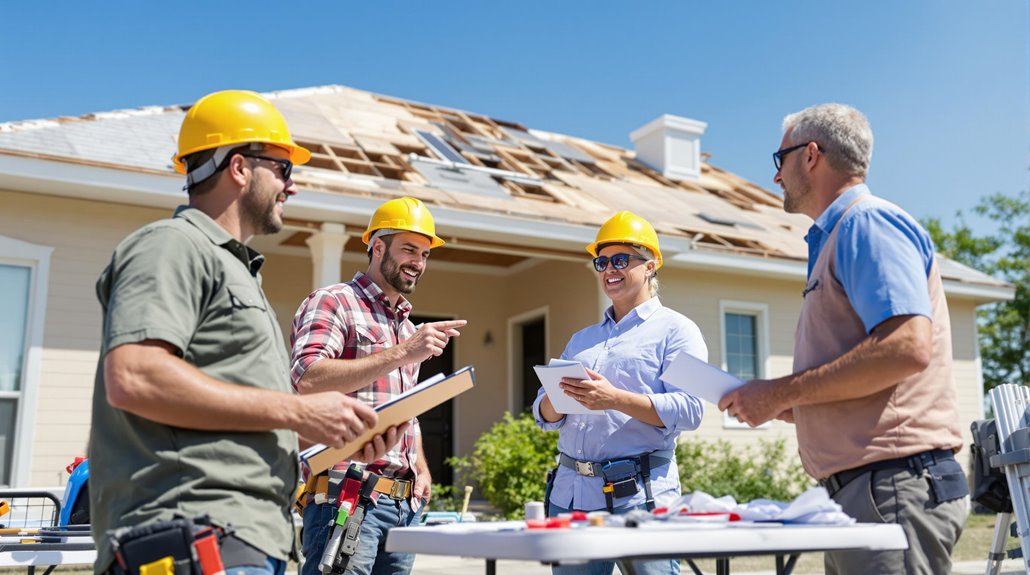
Once settlement approval is secured, property owners must navigate several critical steps to guarantee proper execution of their roof replacement project.
The process begins with verifying settlement details and selecting a reputable contractor to establish a clear repair timeline. Property owners should maintain consistent contractor communication throughout the project while documenting all repairs and expenses.
Insurance communications require careful management, including written confirmation of the settlement and timely submission of invoices. Financial aspects demand attention to payment schedules and deductible fulfillment.
Additionally, property owners should secure warranties for both workmanship and materials, while implementing a maintenance plan for long-term roof protection. Proper record-keeping of all documentation, from warranties to maintenance records, guarantees protection of the investment and facilitates future reference.
The Benefits Of Consulting A Public Adjuster
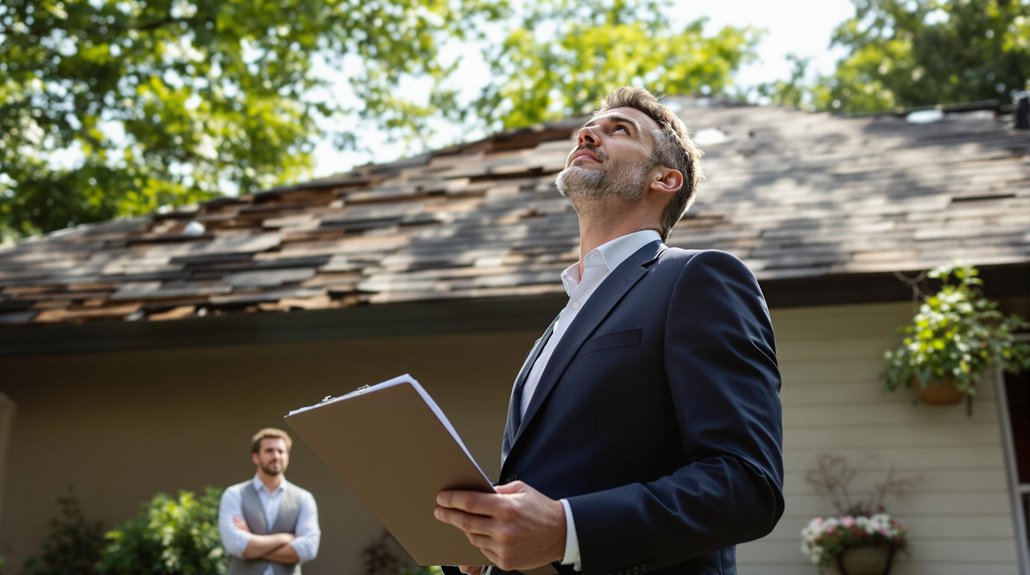
Public adjusters provide essential expertise in managing complex insurance claims, offering objective damage assessments and professional representation throughout the negotiation process.
Their independent status and deep understanding of insurance policies enable them to streamline claim procedures while effectively countering common insurance company tactics that might otherwise result in claim undervaluation.
Research demonstrates that professional public adjusters can secure considerably higher settlement amounts, with studies showing claim payouts up to 747% greater than those negotiated by policyholders independently.
Expertise In Insurance Claims
Steering a roof replacement insurance claim requires specialized knowledge and expertise that professional public adjusters can provide. These licensed professionals understand complex claim nuances and excel at policy interpretation, ensuring policyholders receive maximum benefits from their coverage. They possess the skills to navigate the often convoluted claims process, allowing homeowners to focus on other pressing matters during a stressful time. With their in-depth knowledge of both roof repair and insurance claims, they can effectively advocate for their clients, negotiating with insurance companies to achieve favorable outcomes. Ultimately, enlisting the help of a public adjuster not only expedites the claim process but also increases the likelihood of a successful resolution, providing peace of mind to policyholders.
Their extensive understanding of insurance procedures and documentation requirements proves invaluable throughout the claims process.
- Public adjusters possess in-depth knowledge of insurance policies, enabling accurate interpretation of coverage terms and conditions.
- They maintain current licensing through state departments like TDI, validating their expertise.
- Their negotiation skills help counter insurance company tactics that might minimize claim settlements.
- They manage essential documentation, including damage assessments and proof of loss statements, ensuring proper claim presentation.
Objective Damage Assessment
A thorough damage assessment serves as the cornerstone of successful roof replacement negotiations. Public adjusters conduct extensive roof inspections using established damage criteria to document all aspects of the deterioration accurately and objectively.
Their detailed evaluation process includes photographic evidence, written reports, and thorough documentation of every affected area.
The assessment methodology employed by public adjusters guarantees an unbiased evaluation independent of insurance company interests. Through systematic inspection protocols, they identify both obvious and subtle forms of damage that might otherwise go unnoticed.
Their expertise allows them to collect and present compelling evidence that substantiates the full extent of the damage. This meticulous approach to damage documentation strengthens the property owner’s position during insurance negotiations and helps secure appropriate compensation for necessary repairs or replacement.
Streamlined Claim Process
Engaging a public adjuster transforms the complex roof replacement claims process into a streamlined operation that maximizes efficiency and outcomes. Their systematic approach guarantees claim efficiency through meticulous documentation management and expert policy interpretation.
Public adjusters facilitate seamless adjuster communication while handling all negotiations with insurance companies, allowing property owners to focus on other priorities.
- Detailed documentation gathering and organization, including thorough damage assessments and repair estimates
- Expert policy interpretation to identify and secure maximum entitled benefits
- Strategic negotiation with insurance company representatives to achieve ideal settlements
- Systematic tracking of claim progress to guarantee timely processing and resolution
This professional oversight reduces stress for property owners while providing thorough representation throughout the entire claims process, from initial filing to final settlement.
Higher Claim Payouts & Settlements
Public adjusters substantially increase insurance claim payouts through their expertise in thorough damage assessment and skilled negotiation tactics. Their claim strategies encompass extensive documentation, expert policy interpretation, and effective communication with insurance carriers. Through payout maximization techniques, they guarantee all damage aspects are properly evaluated and compensated.
| Expertise Area | Impact | Benefit |
|---|---|---|
| Documentation | Detailed Evidence Collection | Higher Settlement Values |
| Policy Analysis | Coverage Maximization | Full Benefit Realization |
| Negotiation | Professional Representation | Ideal Claim Outcomes |
These professionals leverage their industry knowledge to identify often-overlooked damages, challenge inadequate assessments, and substantiate repair costs with detailed contractor estimates. Their systematic approach to claim management typically results in settlements that fully address both immediate repairs and long-term roofing durability requirements.
About The Public Claims Adjusters Network (PCAN)
The nationwide Public Claims Adjusters Network (PCAN) represents a coalition of licensed professionals who specialize in advocating for policyholders during insurance claims processes.
These experts understand complex public adjuster roles and implement proven claim negotiation strategies to achieve optimal settlements for their clients.
PCAN members provide extensive support through:
- Expert policy analysis and interpretation to identify maximum coverage benefits
- Thorough damage assessment using industry-leading estimation software
- Strategic negotiation with insurance carriers to secure fair compensation
- Complete claim management from initial filing to final settlement
Operating across all 50 states, PCAN adjusters work on a contingency basis, ensuring alignment with policyholder interests.
Their expertise spans both residential and commercial claims, particularly in complex situations like roof replacement negotiations where technical knowledge and industry experience are essential for successful outcomes.
Frequently Asked Questions
Can I Stay in My Home During Roof Replacement?
Homeowners can remain in their residence during roof replacement, though noise considerations should be evaluated. Safety protocols must be followed, and contractors typically accommodate occupants while maintaining efficient work progress.
How Long Does a Typical Roof Replacement Negotiation Process Take?
A typical roof replacement negotiation timeline spans 2-8 weeks, depending on insurance communication efficiency, documentation completeness, claim complexity, and the number of additional assessments or inspections required. During this period, homeowners should prepare for potential delays by ensuring all necessary paperwork is organized and promptly submitted. Communication with the insurance adjuster is crucial, as they will guide the homeowner through the specifics of the roof repair versus replacement analysis, helping to clarify what coverage is provided. Additionally, engaging with roofing contractors early on can facilitate a smoother process, allowing for accurate estimates and insights into the scope of work needed. During this time, homeowners may also need to weigh the roof replacement vs repair comparison, considering both immediate costs and long-term benefits. Gathering quotes from multiple contractors can further influence the timeline, as different companies may have varying availability and pricing structures. Ultimately, patience and thorough research are essential factors in navigating the roof replacement negotiation process effectively.
Will Filing a Roof Claim Increase My Insurance Premiums?
Filing a roof claim typically results in premium adjustments, varying by claim impact, frequency, and severity. First-time claims may see minimal increases, while multiple claims can trigger substantial rate changes.
What Happens if Hidden Damage Is Discovered During Replacement?
When hidden damages are discovered during replacement, contractors must immediately halt work, document findings, and notify insurance providers to amend claims for additional coverage of newly discovered structural issues.
Can I Choose My Own Roofing Materials After Insurance Approval?
While insurance policies typically allow homeowners to select their preferred roofing materials, choices must align with policy specifications, local building codes, and any coverage limitations regarding material upgrades or modifications.
References
- https://www.rock-top.com/how-to-negotiate-roof-replacement-with-insurance/
- https://www.amfam.com/insurance/home/coverages/roof-insurance-coverage
- https://www.ibexroof.com/how-to-negotiate-insurance-for-a-roof-replacement/
- https://roofclaim.com/deal-roof-replacement-insurance/
- https://www.billraganroofing.com/blog/will-insurance-pay-new-roof
- https://www.allstate.com/resources/home-insurance/roof-leaks-cover-damage
- https://www.billraganroofing.com/blog/what-kind-roof-damage-covered-insurance
- https://www.bankrate.com/insurance/homeowners-insurance/roof-insurance/
- https://roofingrenovationstn.com/8-steps-to-filing-an-insurance-claim-for-your-roof/
- https://www.insuranceclaimrecoverysupport.com/roof-storm-damage-insurance-claim/

